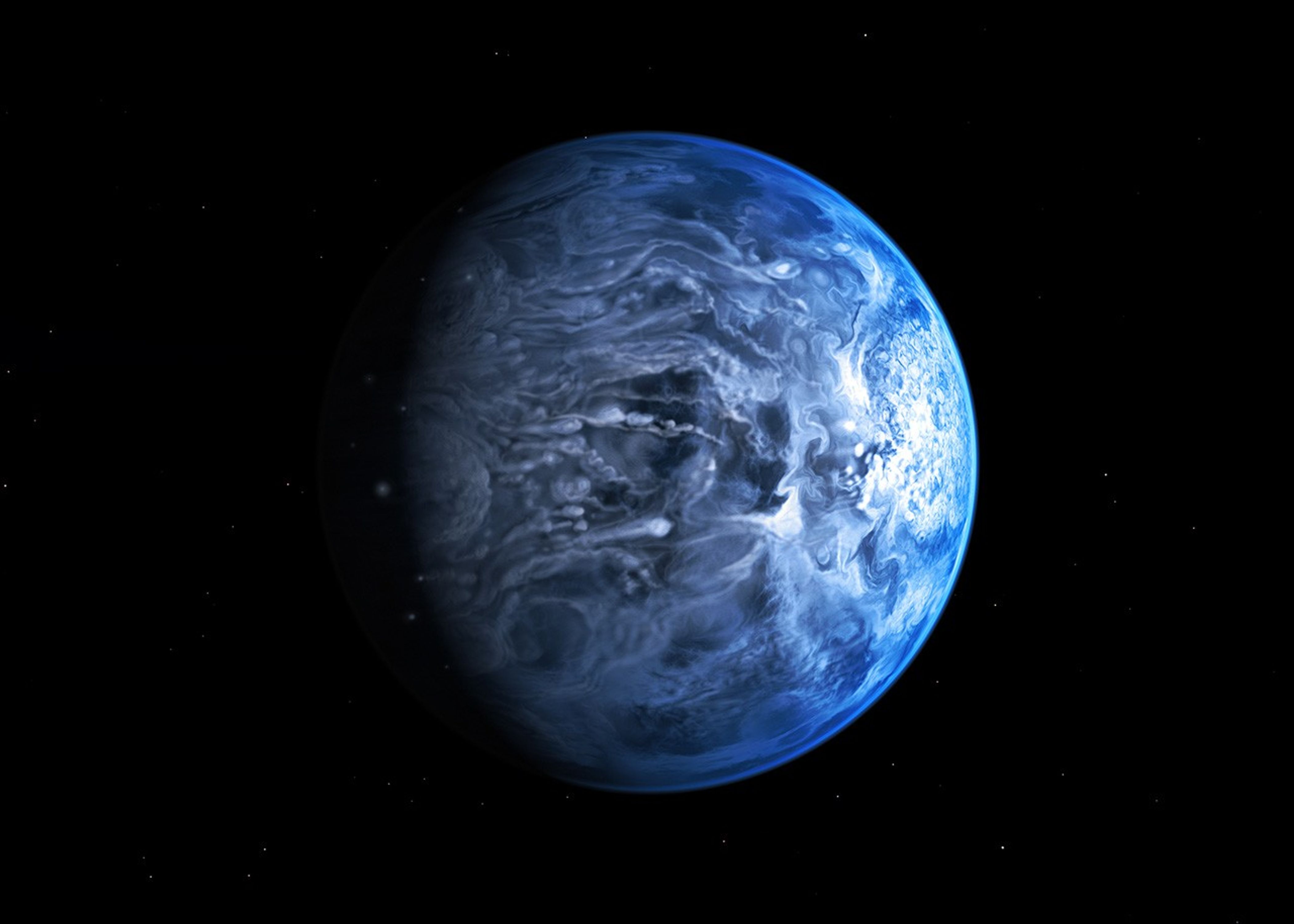Blue and bizarre
July 10, 2013
| Credit | NASA, ESA, M. Kornmesser |
|---|---|
| Language |
|
This illustration shows HD 189733b, a huge gas giant that orbits very close to its host star, HD 189733. The planet's atmosphere is scorching with a temperature of over 1,000 degrees Celsius, and it rains glass, sideways, in howling 4,300 mph (7,000 kilometer-per-hour) winds. At a distance of 63 light-years from us, this turbulent alien world is one of the nearest exoplanets to Earth that can be seen crossing the face of its star. By observing this planet before, during and after it disappeared behind its host star during orbit, astronomers were able to deduce that HD 189733b is a deep, azure blue reminiscent of Earth's color as seen from space.






























